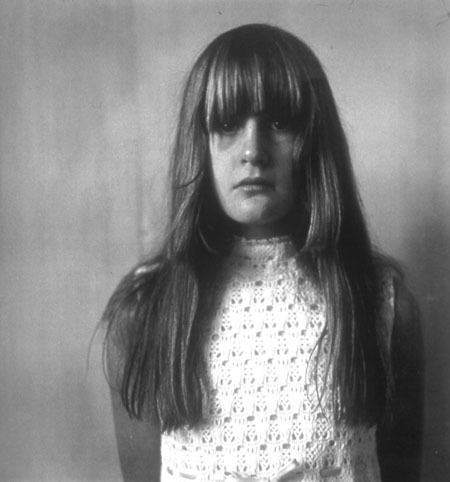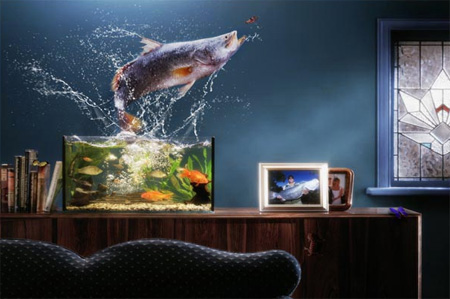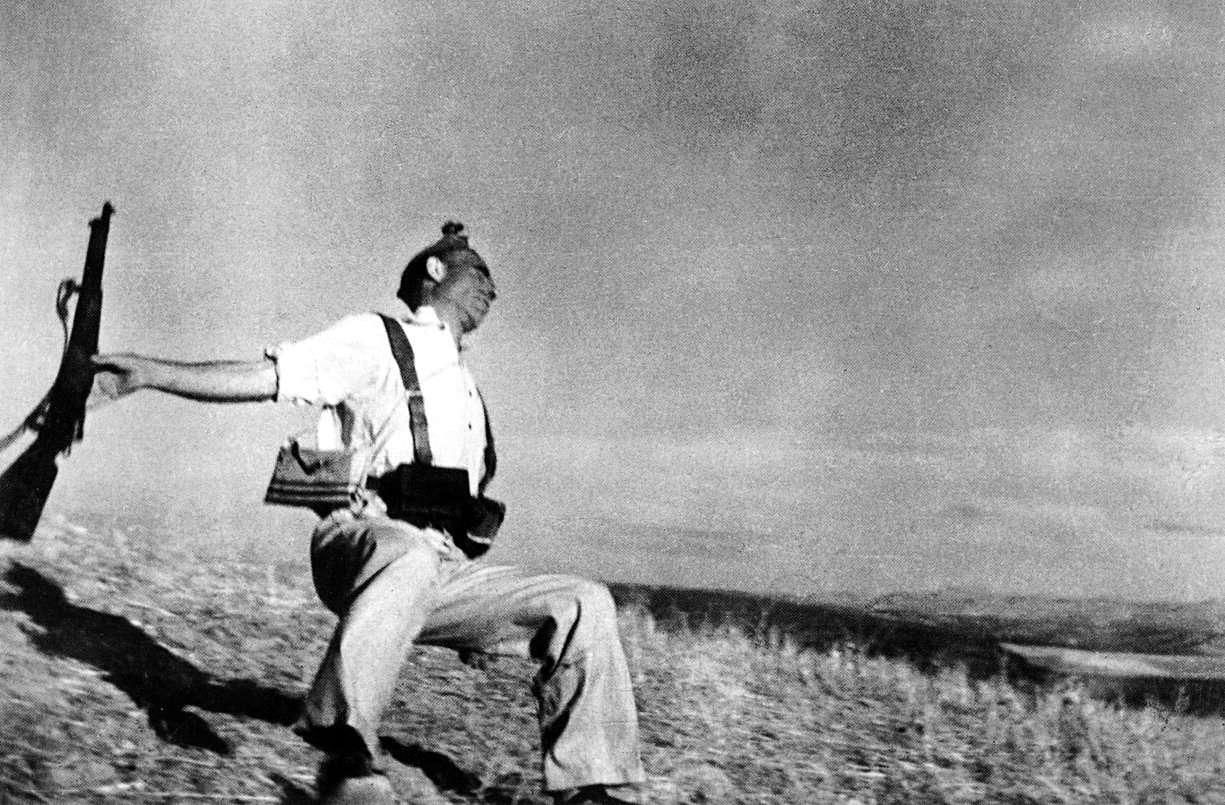BryceLPhoto3
Thursday, 13 December 2012
Monday, 10 December 2012
Thursday, 29 November 2012
Thursday, 22 November 2012
Bag of Alan Sugar
Keys Used:
Q - to quickmask the selected image
Ctrl J - made an extra layer
Ctrl T - transformed the selected image so you can change the size and rotation
L - gets the lasso tool to cut out an image
V - selected move tool
Shift F6 - Feathering tool
Photoshop of Myself:
Sunday, 4 November 2012
Portraiture
Portraiture is very different from photojournalism because it is staged most of the time.
Diane Arbus:
Diane Arbus was known for taking black and white photographs of deviant people ( Circus Performers, Dwarfs) or peoples who's normality seemed ugly or surreal.
She first started out as a fashion photographer with her husband, even getting pictures published in magazines such as 'Vogue' but in the late 1950's she began focusing on her own photography. She began taking photographs of people she found while wandering around New York. Arbus believed that a camera could be “a little bit cold, a little bit harsh” but its scrutiny revealed the truth; the difference between what people wanted others to see and what they really did see.
One of the most known photo shoots she has done is for a wealthy families Christmas and she captured images of the family that were not what the parents has expected, she captured their daughter looking very dull and glum.

Diane Arbus' style of photo journalism is very similar to that of Tony Vacarro because of how natural she liked her pictures to be, she never wanted anyone to pose in her pictures instead she wanted to capture the true emotions of her subject which can be seen in the picture above. Her telling the family to pose reminds me of Tony Vacarro pretending his camera was broken so that he could take a natural picture of Picasso.
Diane Arbus:
Diane Arbus was known for taking black and white photographs of deviant people ( Circus Performers, Dwarfs) or peoples who's normality seemed ugly or surreal.
She first started out as a fashion photographer with her husband, even getting pictures published in magazines such as 'Vogue' but in the late 1950's she began focusing on her own photography. She began taking photographs of people she found while wandering around New York. Arbus believed that a camera could be “a little bit cold, a little bit harsh” but its scrutiny revealed the truth; the difference between what people wanted others to see and what they really did see.
One of the most known photo shoots she has done is for a wealthy families Christmas and she captured images of the family that were not what the parents has expected, she captured their daughter looking very dull and glum.

Diane Arbus' style of photo journalism is very similar to that of Tony Vacarro because of how natural she liked her pictures to be, she never wanted anyone to pose in her pictures instead she wanted to capture the true emotions of her subject which can be seen in the picture above. Her telling the family to pose reminds me of Tony Vacarro pretending his camera was broken so that he could take a natural picture of Picasso.
Friday, 26 October 2012
Photography essay
1. When is an image a Portrait when is it a fashion photograph?
An image is a portrait when it is taken to show the person and their emotions in their face, where as a fashion photograph is used to show what the model is wearing or what make up they have on. In some occasions in fashion photography the image will look like a portrait because the model will show emotion in their poses, but a real portrait would in circumstances be more of a natural emotion instead of put on to sell the image.

This picture shows what a natural portrait would look like, it is clear what emotions the girl in the picture is feeling because there is no other main focus besides her face, where as a fashion photograph will look like the one below not much real emotion shown just a model in a stance to show off a product.
2. To what degree should an image manipulated to go into a fashion magazine?
In fashion manipulating a photograph can help sell more because it will catch their target audiences eye and make the want to look like the person in the picture, ethically the photographer shouldn't allow his pictures to be manipulated in a way that completely transforms a model into a different person. Photograph manipulation can count as removing red eye from a picture or adding a black and white effect but that usually doesn't bother many people because most of the people that look at the magazines will do the same thing to their photographs before printing them or putting them on social networks. Many magazines have come under some scrutiny for making known actress'/models look much thinner than they actually are or changing parts of their face to suit their demographic, while it is not illegal for them to do it, it is morally wrong and can sometimes damage a magazines image and lose them customers. I think a the most a photograph should be manipulated is to remove red eye and small blemishes, the only time i would say it's ethically okay to manipulate a lot of a picture is if it is very unflattering.
3. Is there a clash between the creative and commercial side of fashion Photography?
I think the creative side of photography can work very well with the commercial side it all just depends on who you're target audience is, there will be times when a photographer will have a very creative idea but it won't be accepted because the publisher won't think that the people reading their book/magazine will have any interest in seeing something like that, for example a women's fashion magazine wouldn't want to see a picture of a big fish jumping out of a fish tank like the one below. So in my opinion i think the two shouldn't clash if the ideas are used to fit to the book/magazines target audience.

An image is a portrait when it is taken to show the person and their emotions in their face, where as a fashion photograph is used to show what the model is wearing or what make up they have on. In some occasions in fashion photography the image will look like a portrait because the model will show emotion in their poses, but a real portrait would in circumstances be more of a natural emotion instead of put on to sell the image.

This picture shows what a natural portrait would look like, it is clear what emotions the girl in the picture is feeling because there is no other main focus besides her face, where as a fashion photograph will look like the one below not much real emotion shown just a model in a stance to show off a product.
2. To what degree should an image manipulated to go into a fashion magazine?
In fashion manipulating a photograph can help sell more because it will catch their target audiences eye and make the want to look like the person in the picture, ethically the photographer shouldn't allow his pictures to be manipulated in a way that completely transforms a model into a different person. Photograph manipulation can count as removing red eye from a picture or adding a black and white effect but that usually doesn't bother many people because most of the people that look at the magazines will do the same thing to their photographs before printing them or putting them on social networks. Many magazines have come under some scrutiny for making known actress'/models look much thinner than they actually are or changing parts of their face to suit their demographic, while it is not illegal for them to do it, it is morally wrong and can sometimes damage a magazines image and lose them customers. I think a the most a photograph should be manipulated is to remove red eye and small blemishes, the only time i would say it's ethically okay to manipulate a lot of a picture is if it is very unflattering.
3. Is there a clash between the creative and commercial side of fashion Photography?
I think the creative side of photography can work very well with the commercial side it all just depends on who you're target audience is, there will be times when a photographer will have a very creative idea but it won't be accepted because the publisher won't think that the people reading their book/magazine will have any interest in seeing something like that, for example a women's fashion magazine wouldn't want to see a picture of a big fish jumping out of a fish tank like the one below. So in my opinion i think the two shouldn't clash if the ideas are used to fit to the book/magazines target audience.

Monday, 24 September 2012
Photo Journalism
Photographers: Henri Cartier-Bresson - He was a surrealist and used a technique he called the decisive moment, which means he found a places were he knew their would be constant life and waited for someone to come past to take the photo. The photo below is one of the many that Henri was famous for this image helped show that Britain was stepping into the unknown as world war one happened after this.
He used the Leica camera which was the first instant camera with the view finder on the side so you could see your surroundings and wait for the perfect moment to capture your image, this camera was the pinacle of modern photography for the time it was made the Leica was ahead of it's time and very expensive.
Photojournalism is the art or practice of communicating news through photographs, this can be seen in the picture to the left because at the time it was taken this was seen as news for the world.
Photojournalism is very different from other forms of photography such as fashion photography because it captures and documents real events which is what describes the photo to the left best it captures a real moment in life; a decisive moment of a man jumping over a puddle which people would later look at as a defining time of the world jumping into the unknown which was the world war.
Tony Vaccaro - Vaccaro was was a soldier in the front line of U.S army in World War 2 he was also a photojournalist, his work is known because he captured images of the aftermath of the war. He was in the 83rd Infantry Division and took part in the Normandy landings armed with an M-1 rifle and an Argus C-3 camera. Vaccaro said his aproach was "I said to myself: Tony, don’t worry about how good the picture is going to be under difficult conditions and light. Take it, no matter what. If the eye sees it, take it.” This however would not benefit Vaccaro when some of his pictures were not accepted by newspapers and magazines because they showed U.S soldiers dead/dying.
Tony Vaccaro was a very well known photo journalist for capturing what people couldn't see happening in the war, he released some of his pictures in Flair magazine even though near 4,000 of them were destroyed in an accident in 1948.
Vaccaro didn't enjoy taking staged photographs, he tried to get things in their natural state, when Tony Vaccaro was invited to have an audience with Pablo Picasso he told Picasso that his camera was broken and captured him when he was not ready.


Robert Capa - Capa was another combat photographer just like Vaccaro except his photographs had more of a unique impact, Capa documented several different wars like the Spanish Civil War, World War 2 and the second Sino-Japanese War. What made Capa's photographs so unique was that he took pictures at a decisive moment which gave them more of an impact when seen. Robert Capa took the skills he had with taking decisive pictures and produced famous photographs such as the Spanish soldier being shot and the most famous one of them all, the American G.I's raising the flagon D-Day.


He used the Leica camera which was the first instant camera with the view finder on the side so you could see your surroundings and wait for the perfect moment to capture your image, this camera was the pinacle of modern photography for the time it was made the Leica was ahead of it's time and very expensive.
Photojournalism is the art or practice of communicating news through photographs, this can be seen in the picture to the left because at the time it was taken this was seen as news for the world.
Photojournalism is very different from other forms of photography such as fashion photography because it captures and documents real events which is what describes the photo to the left best it captures a real moment in life; a decisive moment of a man jumping over a puddle which people would later look at as a defining time of the world jumping into the unknown which was the world war.
Tony Vaccaro - Vaccaro was was a soldier in the front line of U.S army in World War 2 he was also a photojournalist, his work is known because he captured images of the aftermath of the war. He was in the 83rd Infantry Division and took part in the Normandy landings armed with an M-1 rifle and an Argus C-3 camera. Vaccaro said his aproach was "I said to myself: Tony, don’t worry about how good the picture is going to be under difficult conditions and light. Take it, no matter what. If the eye sees it, take it.” This however would not benefit Vaccaro when some of his pictures were not accepted by newspapers and magazines because they showed U.S soldiers dead/dying.
Tony Vaccaro was a very well known photo journalist for capturing what people couldn't see happening in the war, he released some of his pictures in Flair magazine even though near 4,000 of them were destroyed in an accident in 1948.
Vaccaro didn't enjoy taking staged photographs, he tried to get things in their natural state, when Tony Vaccaro was invited to have an audience with Pablo Picasso he told Picasso that his camera was broken and captured him when he was not ready.


Robert Capa - Capa was another combat photographer just like Vaccaro except his photographs had more of a unique impact, Capa documented several different wars like the Spanish Civil War, World War 2 and the second Sino-Japanese War. What made Capa's photographs so unique was that he took pictures at a decisive moment which gave them more of an impact when seen. Robert Capa took the skills he had with taking decisive pictures and produced famous photographs such as the Spanish soldier being shot and the most famous one of them all, the American G.I's raising the flagon D-Day.


Subscribe to:
Posts (Atom)









